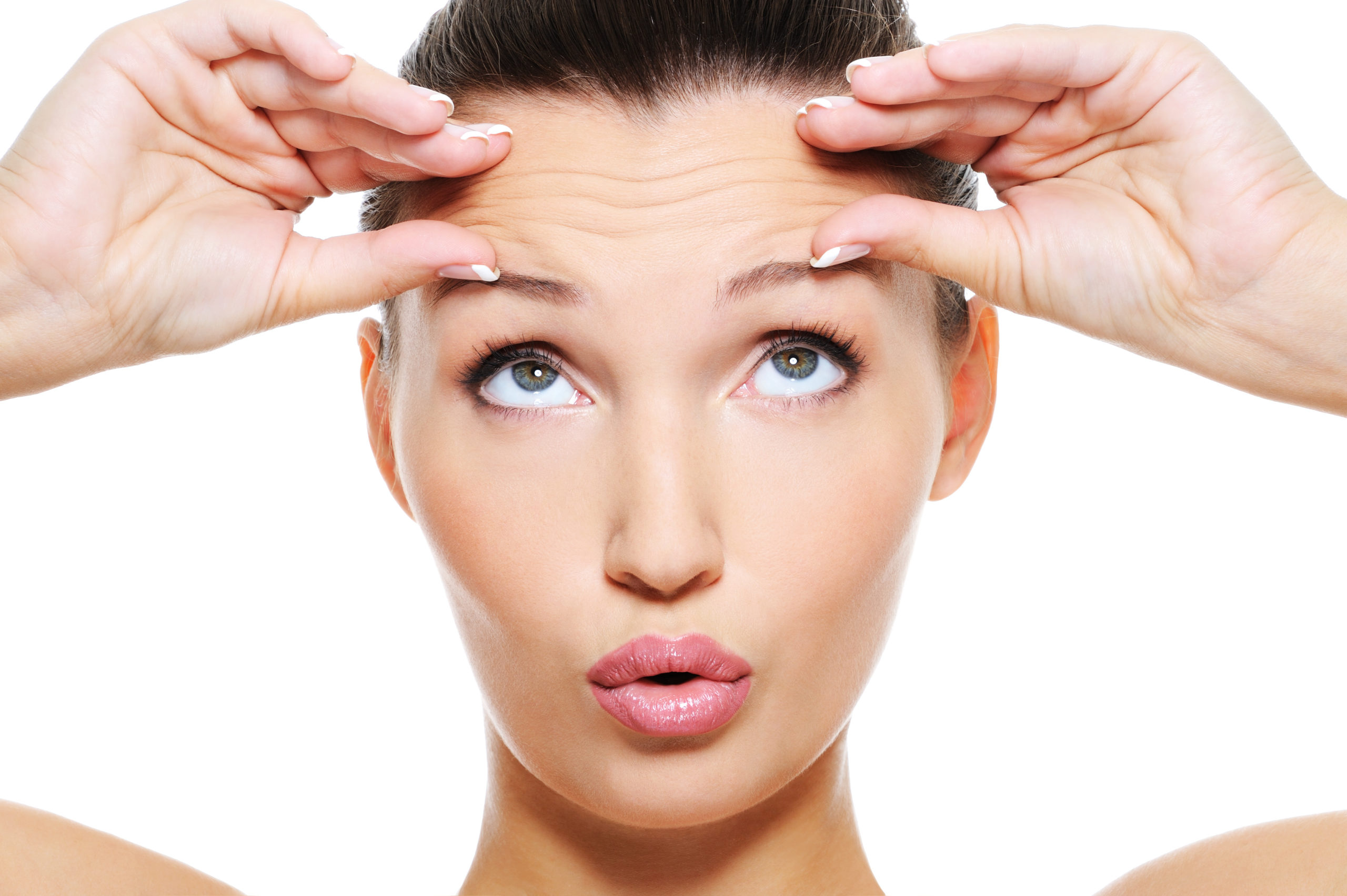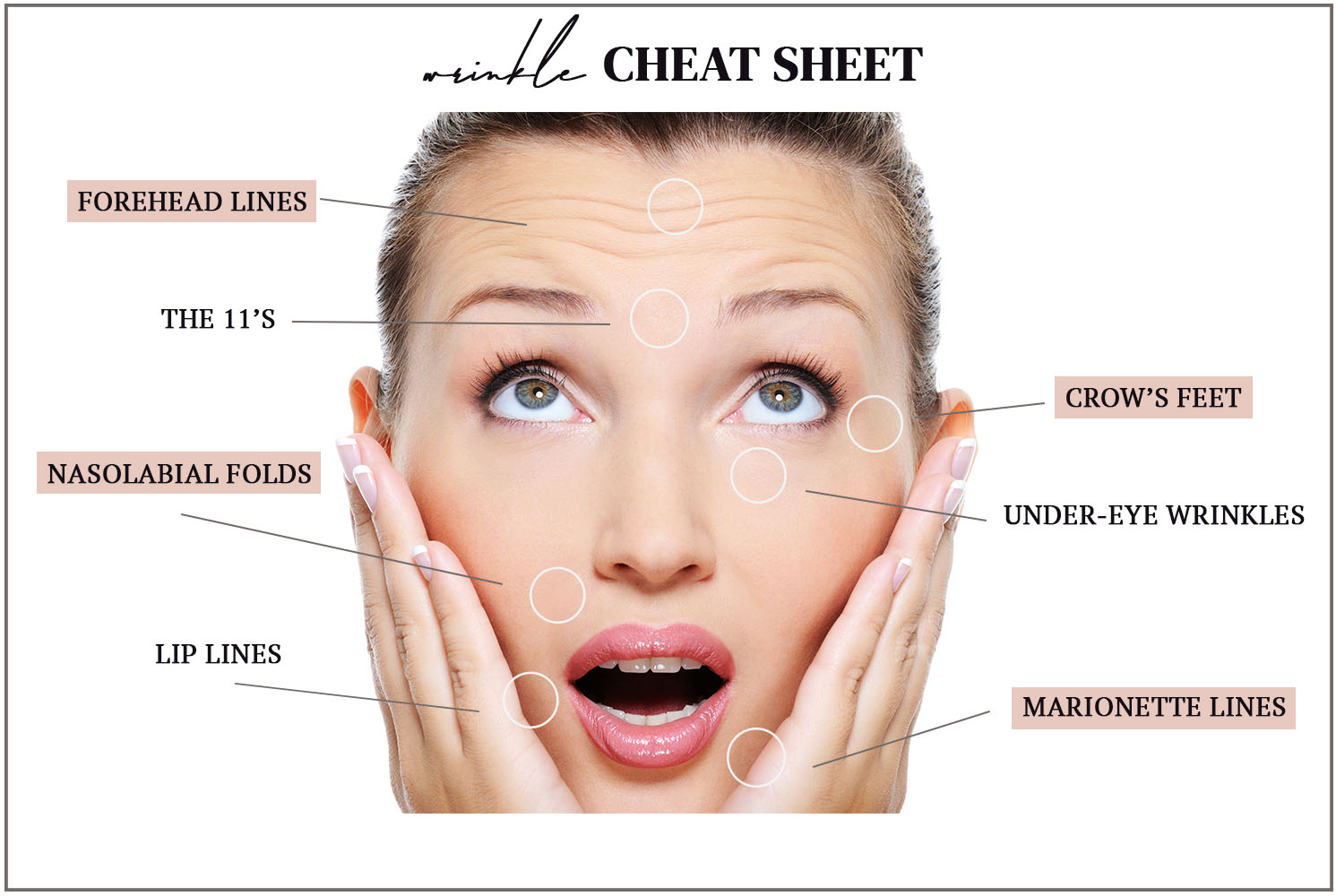Beauty...

By Elise Tabin
Wrinkle schminkle. Maybe your fine lines and wrinkles don’t bother you—perhaps you even see them as a badge of earned aging. But for those who want smooth-as-silk skin, many treatments are available, depending on the type of wrinkle and where it resides.
The word wrinkle is an umbrella term referring to lines at rest, lines present only during animation, and creases, according to board-certified dermatologist Dr. Estee Williams. However, the underlying cause of any wrinkle is the same: a loss of collagen and elastin, the thinning of the dermal layers, and a decrease in moisture retention, but other factors play a role in their development, too.
Good skincare is essential in the fight against fine lines and wrinkles. But even if you are diligent about applying your products, the skin continues to age, and wrinkles are, unfortunately, bound to claim prime real estate on your face. Wrinkles form from a multitude of factors, including genetics, UV radiation, poor sleep, and bad lifestyle choices, says board-certified dermatologist Dr. Michelle Greene.
Ultraviolet rays are the worst offenders.
“UV light breaks down collagen and elastin fibers, so to prevent wrinkles, you have to stay out of the sun,” Dr. Greene shares. “That’s why sunscreen is critical.” But it’s just as important to follow a regular skincare routine consisting of antioxidants, retinol, glycolic acid, alpha-hydroxy acids, and moisturizer.
There are two types of wrinkles: static and dynamic wrinkles.
Static wrinkles are the deep wrinkles present when the face is at rest and when animated. They result from a loss of collagen (a building block of healthy, plump skin) and elastin (the protein that allows the skin to snap back). As collagen and elastin levels dip, the skin loses support and starts to sag.
Board-certified dermatologist Dr. Geeta Shah says static wrinkles are always present, which makes them harder to treat. “The more superficial the wrinkle, the easier it is to reverse,” Dr. Shah notes. “Deeper wrinkles need more aggressive laser treatments, which stimulates healthy collagen formation in the dermis.” Because aging is progressive, you should do lasers regularly to maintain healthy collagen and improve wrinkles.
Dynamic wrinkles result from constant movement and facial expressions like squinting, smiling, and laughing and are only visible during activity. These wrinkles are more crease-like and can develop as early as your 20s, sometimes earlier. However, the more active and expressive the face, the deeper they become. To treat movement-related wrinkles, injectables, like Botox, are best since they temporarily relax the muscles.

What they look like: A multi-prong wrinkle that resembles the imprint of a crow’s foot at the outer corners of the eyes
Best treated with: Botox, Xeomin, Dysport, or Juveau
Neuromodulators are the gold standard for eliminating expression-related crow’s-feet because they target the large muscle that encircles the eye to limit muscle movement, in turn smoothing the skin. The injections take three to seven days to kick in, and, as a result, you may notice that your skin remains baby smooth when you squint or smile.
Dr. Williams says that thin patients, or those who have lost weight or are over the age of 50, often benefit from injecting a small amount of filler just under the crow’s-feet to help thicken the skin. “The thicker the skin is, the less it will fold,” she says.
What they look like: Deep-set horizontal wrinkles that extend across the forehead—they usually appear as at least a pair
Best treated with: Botox, Xeomin, Dysport or Juveau
Injecting neuromodulators into the muscles in the forehead limits the formation of wrinkles. But, like other areas, the onset of action is the same. Also, your doctor may use a laser to smooth out the skin further. “The neuromodulators reduces the movements that cause the wrinkles, and the laser helps iron out the creases in the skin,” says Dr. Williams.
What they look like: A pair of short vertical wrinkles between the eyebrows that resemble the number 11. These wrinkles sometimes extend down the bridge of the nose or up towards the forehead.
Best treated with: Botox
Most doctors turn to trusted Botox to even out the 11s. “Botox is best for treating them because if the muscle retains full power to make expressions, other treatments will not work,” says Dr. Williams. “You need the neuromodulators to have the best chance of reducing these expression lines.”
What they look like: Vertical wrinkles that live right above the upper lip
Best treated with: Filler and a laser
Fillers can fill in the fine lines around the mouth, but often, a laser is necessary to soften the wrinkles further. To get at the tiny ones above the mouth, Dr. Greene injects them with Belotero Balance, an injectable hyaluronic acid designed to treat wrinkles and lines above and around the mouth. Or, if they are hard to inject due to their small size, she’ll treat them with either a TCA peel or a Fraxel laser. Dr. Shah practices a similar combination technique but prefers to use Sciton’s Contour TRL laser to treat smoker lines around the mouth. “Combining this device with filler or toxin creates effective results,” she says.
What they look like: Shadowy parentheses that start at the base of the nose and extend towards the mouth
Best treated with: Filler and a laser or a thread lift
Injecting filler into the folds themselves can sometimes do more harm than good. So instead, most dermatologists inject the cheek area, which lifts the wrinkles from above. In addition, maintaining a bit of natural shadowing is important; otherwise, the face can look flat and distorted.
Fillers aren’t the only way to correct folds — nonablative and ablative lasers are a top choice to stimulate collagen production for plumper skin. Additionally, ultrasound-based treatments like Ulthera and Sofwave also encourage collagen to be made over the coming months, which reduces the appearance of wrinkles. And of course, there’s the OG, Thermage, which can treat the lower part of the face and anywhere else. “I do a lot of Thermage for wrinkles, and it’s fabulous,” shares Dr. Greene. “It tightens the skin by creating new collagen.”
Of-the-moment thread lifts hone in on the mid-face for subtle lift. These medical-grade absorbable sutures are placed under the skin and pulled up to provide a smoothing and lifting effect. Over time, they stimulate collagen.
What they look like: Smaller lines and wrinkles at the corners of the mouth that create a sad look
Best treated with: Fillers
Dr. Green uses hyaluronic acid filler like Juvéderm to soften wrinkles that extend down from the mouth. “They’re the best at doing this for this area,” she says. Fillers add volume to the site to fill in the wrinkle and, therefore, plump it up. Sculptra and Radiesse, collagen-stimulating fillers that provide immediate volume, are sometimes used for deeper lines.
What they look like: Thin wrinkles under the eye, often with crepey skin
Best treated with: A combination of neuromodulators, skin resurfacing treatments, and filler
One of the more complicated areas to treat, the under eyes are usually affected by wrinkling (both at rest and during movement), hollowness, and crepey skin. Neuromodulators can smooth out movement-related wrinkles.
“For etched-in wrinkling at rest and upon animation, lasers, chemicals peels, and microneedling work well,” says Dr. Williams. Dr. Greene prefers Ematrix, a skin treatment that uses radiofrequency energy to create new collagen and elastin. Some doctors also like to use microneedling with PRP (platelet-rich plasma) to amend weak collagen and elastin in the area.
Under-eye filler works best to correct hollows below the eye, not wrinkles. And in the case of hollows, crepey skin, and deeply etched wrinkles, plus bags or bulging, a blepharoplasty can address all issues at hand.
What they look like: Long, deep, windy vertical wrinkles that somewhat resemble the lines on a map
Best treated with: Filler and a laser or microneedling
The chest is another area where a combination of modalities is necessary to get rid of wrinkles. “I inject the lines with Sculptra and use Fraxel, too,” Dr. Greene says. Microneedling, which prompts collagen production, is another dermatologist favorite. Again, a pronged approach creates a consistent result to reduce deep-set wrinkles.
What they look like: Deep-set, thin wrinkles that run horizontally on the neck
Best treated with: Neuromodulator, filler, and a laser or radiofrequency treatment
Treating neck wrinkles usually necessitates a little bit of this and a little bit of that simply because a lot is going on with the neck. To erase wrinkles, a filler, like Sculptra, is often the go-to and is paired with Botox to diminish the vertical chords. Dr. Greene says, “one fills, and the other stops the muscle movements.” Hyaluronic acid fillers plump up the creases of the horizontal lines, and sometimes, a fractional laser or radiofrequency with microneedling (available in the Vivace treatment) further softens the wrinkles by building new collagen.